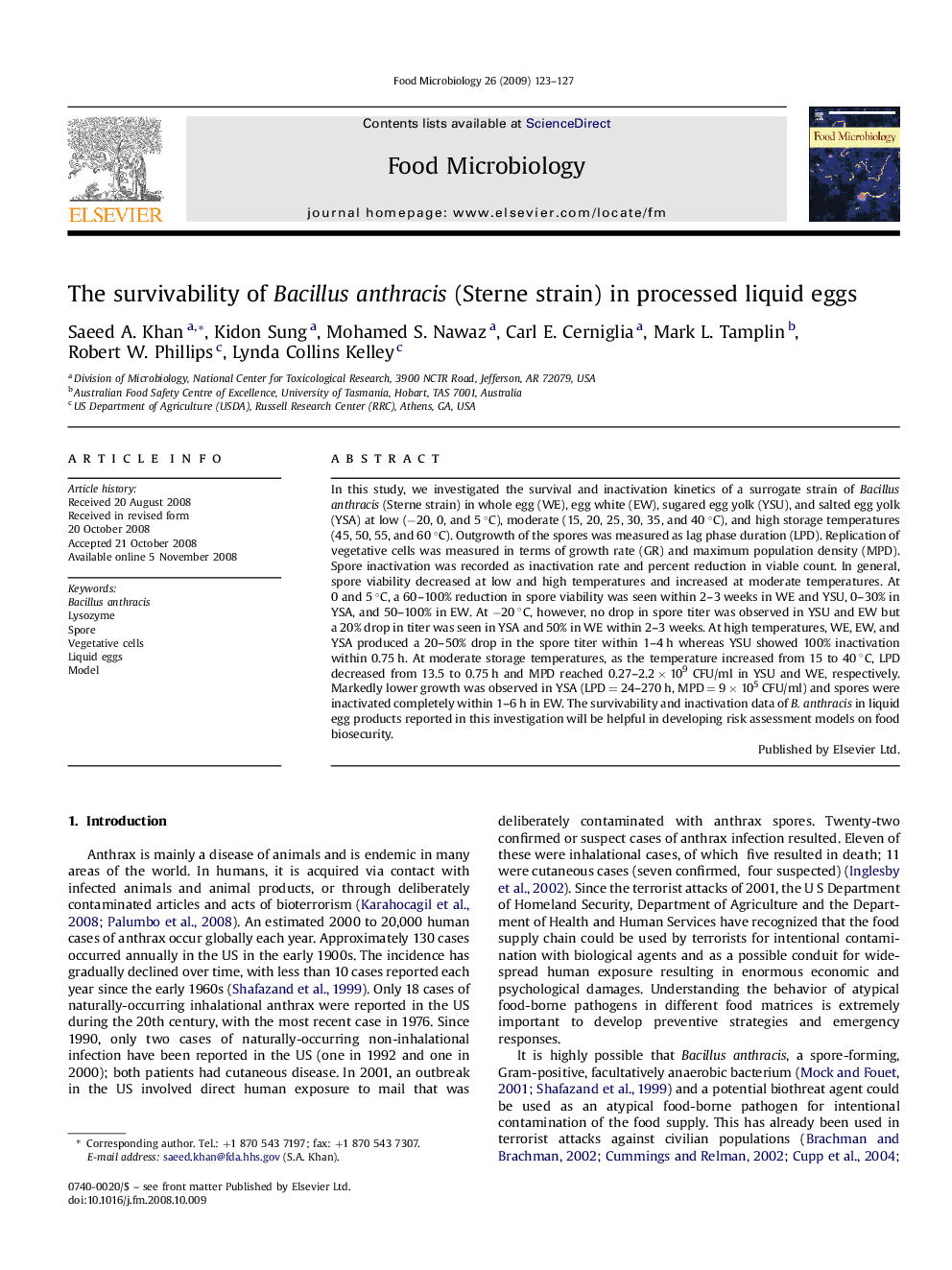| Article ID | Journal | Published Year | Pages | File Type |
|---|---|---|---|---|
| 4363624 | Food Microbiology | 2009 | 5 Pages |
In this study, we investigated the survival and inactivation kinetics of a surrogate strain of Bacillus anthracis (Sterne strain) in whole egg (WE), egg white (EW), sugared egg yolk (YSU), and salted egg yolk (YSA) at low (−20, 0, and 5 °C), moderate (15, 20, 25, 30, 35, and 40 °C), and high storage temperatures (45, 50, 55, and 60 °C). Outgrowth of the spores was measured as lag phase duration (LPD). Replication of vegetative cells was measured in terms of growth rate (GR) and maximum population density (MPD). Spore inactivation was recorded as inactivation rate and percent reduction in viable count. In general, spore viability decreased at low and high temperatures and increased at moderate temperatures. At 0 and 5 °C, a 60–100% reduction in spore viability was seen within 2–3 weeks in WE and YSU, 0–30% in YSA, and 50–100% in EW. At −20 °C, however, no drop in spore titer was observed in YSU and EW but a 20% drop in titer was seen in YSA and 50% in WE within 2–3 weeks. At high temperatures, WE, EW, and YSA produced a 20–50% drop in the spore titer within 1–4 h whereas YSU showed 100% inactivation within 0.75 h. At moderate storage temperatures, as the temperature increased from 15 to 40 °C, LPD decreased from 13.5 to 0.75 h and MPD reached 0.27–2.2 × 109 CFU/ml in YSU and WE, respectively. Markedly lower growth was observed in YSA (LPD = 24–270 h, MPD = 9 × 105 CFU/ml) and spores were inactivated completely within 1–6 h in EW. The survivability and inactivation data of B. anthracis in liquid egg products reported in this investigation will be helpful in developing risk assessment models on food biosecurity.
